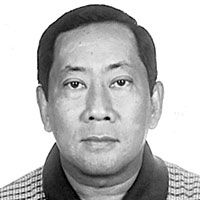Enjoying Tokyo riding on efficient subways

TOKYO, Japan — The entire Avila family was in Tokyo over the weekend to attend the 25th anniversary of the wedding and renewal of vows of Mr. Yuki and Adela-Avila Kono. She is our only sister who had polio at the age of two and no one ever expected to get married to a handsome gentleman who once lived in Setagaya-Ku in Tokyo and worked with the Japanese International Cooperation Agency (JICA) where both of them met. So 25 years ago, they got married in Cebu and they brought along their family for the wedding.
They lived in Tokyo for sometime and moved to Cebu and now, 25 years later, my sister thought that they should celebrate their silver anniversary in Tokyo. So this time around, we had to tag along with her. Since we are all busy people… it was really the first time that all my siblings were uprooted out of Cebu City to be in Tokyo for this grand occasion. This is largely due to our nephews who have grown up and are able to run the business so we could join Adela and Yuki for this memorable trip to Japan.
One great advantage for Cebuanos these days is direct flights from Cebu to Narita and back on board Philippine Airlines or Cebu Pacific Air. I was just in Osaka, Japan last November and we enjoyed having direct flights from Kansai International Airport to Mactan Cebu International Airport (MICA).
One thing we Filipinos can learn from the Japanese is their passion to make their infrastructure work for their people. When you arrive in Narita International Airport (NIA) the passenger has different choices: either take a bus to their hotel, an express train, a taxi or rent-a-car, with no frills and no thrills. Everything works like clockwork.
Tokyo is a very densely populated metropolis of nearly 14 million people, nearly as much as Metro Manila. But the majority of the population in Tokyo goes to work, school and business and back by one of the most intricate and efficient subway systems in the world. To an untrained eye you’d really get lost, if you don’t know where your destination is located. But for the hardy souls, it’s a matter of understanding their system, even if it is really very complicated. But there is one railway that covers most of metropolitan Tokyo and that’s the JR Line, which goes on a round loop.
We stayed in Shinagawa, which is the southmost (or 6 o’clock) part of the JR loop. At 9 o’clock or 15 minutes away from Shinagawa is Shinjuku, dubbed as the Makati of Tokyo. At 3 o’clock is Akihabara, Tokyo’s most famous shopping district for electronic products. So in just one day, we were able to go about those interesting places in Tokyo. Yes, all their subway trains work and arrive exactly on time; something that the Aquino regime should perhaps learn from Japanese transportation agencies.
Now at the rate the Department of Public Works and Highways (DPWH) or the Department of Transportation (DOTC) is working… it would take the Philippines a hundred years to be able to catch up with Tokyo in today’s time. In short, we can never hope to catch up for as long as we retain the same political system that glorifies criminals that call themselves honorable politicians, who steal our public money using dummy NGOs or corporations and worse, no one is thrown to jail for their corruption.
If I were President of this country, I would give JR Lines a hundred years to develop a rail-based mass transit system for Metro Cebu all constructed five-storys below street level, so that there would be no need to pay for road-right-of-way to land owners. This is the only way we can ever hope to catch up with Japan. Incidentally it is 9 degrees in Tokyo…soooo cold!
Incidentally on our way to Shinjuku, we went down the Shibuya Station to see a famous statue, the statue of Hachi, the loyal dog whose story became a movie in 2009 entitled “Hachi: A Dog’s Tale” starring Richard Gere and Joan Allen. This is the true story of an Akita Dog that accompanied his master to the train station everyday when he goes to work and waits for him until he returns in the evening train.
But one day the dog’s master died on the train and Hachiko waited and waited and waited in all sorts of weather, rain, shine and snow and years later everyone who goes of the subway already knew this dog and give him food. Hachiko died waiting for his master who never came back. Hachiko’s story was printed in the newspapers in Tokyo where he became a sort of national hero in Japan and a bronze statue erected in his name for being a faithful and loyal dog.
After Tokyo, we go on a pilgrimage to Akita, four hours by Shinkansen to the north passing by Sendai, which was devastated by the Japan Tsunami. This pilgrimage to Akita is important for Catholics, as the message of the Blessed Virgin Mary to Sister Sasagawa is almost the same as the message given by the Blessed Lady to Sister Teresing of Lipa. Abangan.
* * *
Email: vsbobita@mozcom.com or vsbobita@gmail.com
- Latest
- Trending
























